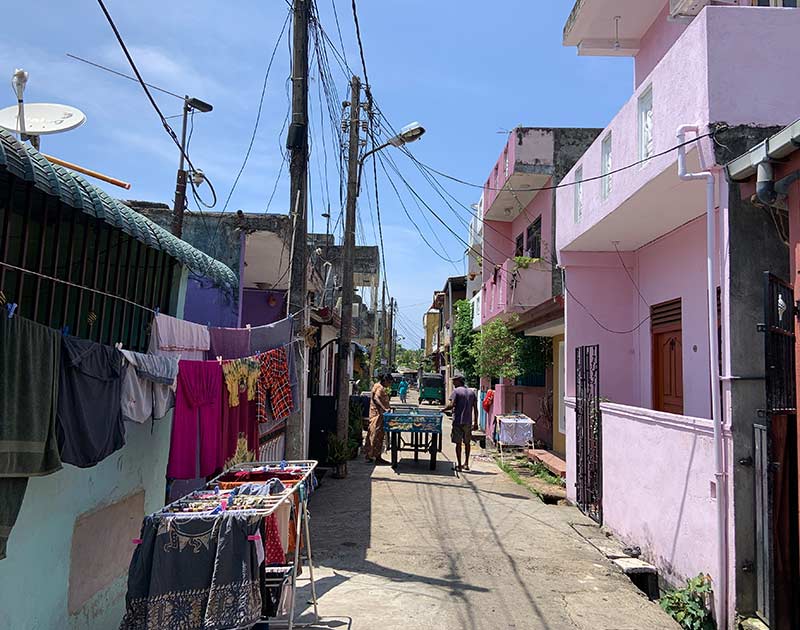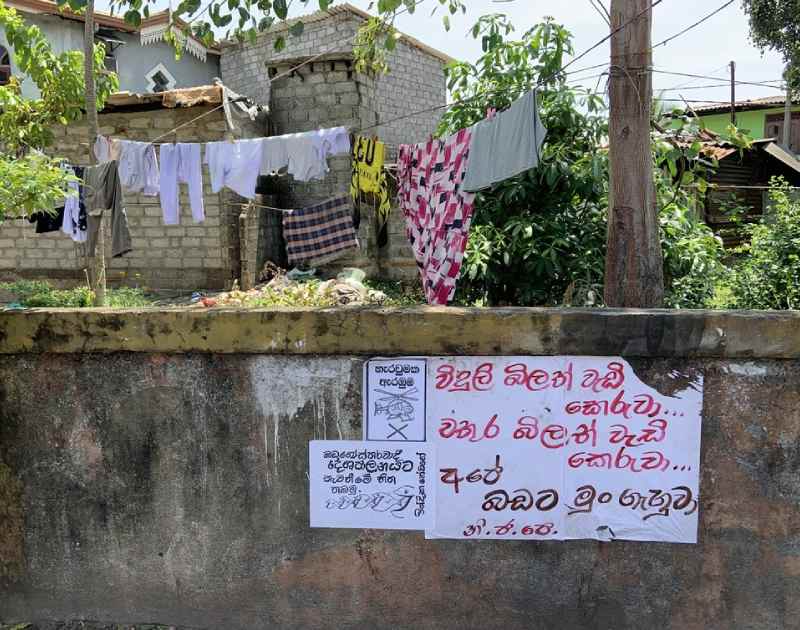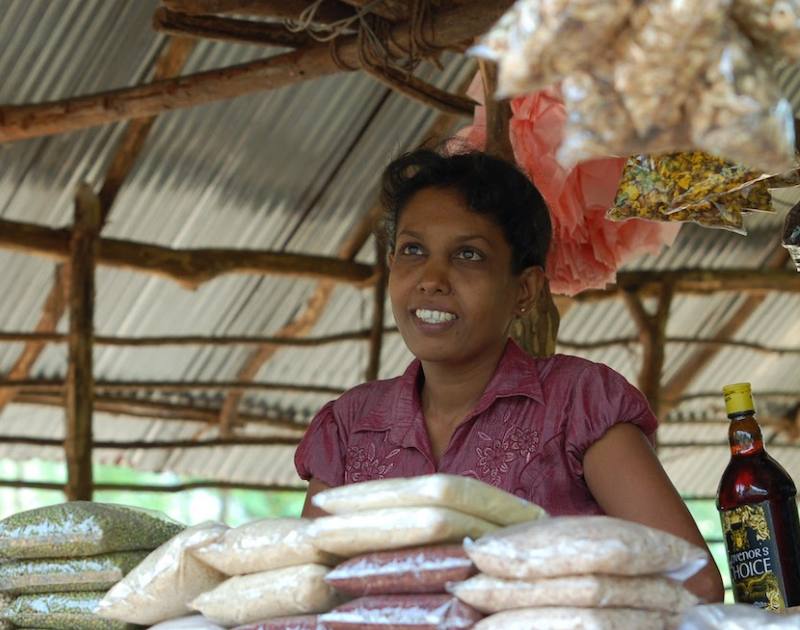
- Home
- Knowledge Insights
- Anchoring meaningful community participation at the heart of nature-based solutions in cities
Nature-based solutions (NbS) has emerged as a term that encompasses approaches to repair, sustain and protect ecosystems and ecosystem services whilst working to address societal challenges. The multifaceted nature of NbS has allowed for policy makers and officials alike to utilise ecosystem services, to not only address sustainability initiatives such as biodiversity conservation, erosion control, wetland reforestation but also address societal challenges such as climate change mitigation and adaptation, food security and water security to name a few. Estimates suggest that NbS can provide nearly 37% of the mitigation needed until 2030 in order to achieve the targets set out by the Paris Agreement, in addition to contributing towards achieving the Sustainable Development Goals. South Asian countries like Sri Lanka, Bangladesh, Bhutan, Pakistan and Nepal have all explicitly included NbS in their Nationally Determined Contributions as part of the Paris agreement.
Against this backdrop, Colombo Urban Lab together with People’s Alliance for Right to Land (Sri Lanka), Transitions Research (India) and International Centre for Climate Change and Development (Bangladesh) hosted a Policy Lab, ‘Integrating Equity and Reframing Urban NbS in South Asian Cities’, in Colombo last month. The Policy Lab had attendees from Sri Lanka, India, Bangladesh and Pakistan who came together to discuss the current framings of NbS, and to better re-align it to the context of South Asian cities. As part of this, a key discussion point was the importance of community engagement in achieving successful NbS initiatives.
Although NbS has received increased attention recently, much of it is targeted towards rural use-cases with less focus on the role and impact that NbS can play in rapidly urbanising cities. Given the densely populated nature of South Asian cities, and the many ways it can impact city resilience, therein lies an opportunity to leverage NbS to achieve sustainable development. Since the 1980s, sustainability concepts and approaches have been used to steer urban development through efforts such as flood management and waste management. More recently this shift has also encompassed a new element which is linked to NbS, where a key consideration is on societal well being and quality of life of residents.
With ‘urban’ as an under explored context of NbS, the focus shifts to the complexities of deploying NbS in cities, in a just and equitable manner that achieves both environmental objectives along with plural objectives of societal well being. South Asian cities have high population density, with cities like Mumbai, and New Delhi ranking higher than those of other global cities as of 2012. In Sri Lanka alone, Colombo has the highest population density of the country. Hence, urban NbS cannot focus on its sustainability objectives alone, as the urban ecosystems are already likely to be inextricably linked to the residents of that city.
Keeping the nexus between residents and ecosystem services in mind, community participation emerges as a key factor when it comes to NbS projects. Participation is not a new term or concept- its emergence can be traced back to the 1970s and 1980s. Success from empowerment and capacity development led to it being a key consideration in project interventions. However, the importance here lies in the nature of community participation.
Historically, and more often than not, community participation has taken the form of “consultations” to satisfy engagement criteria for projects, a sort of ‘tick-box’ exercise. These can take the form of awareness raising initiatives to inform communities that projects are taking place in their communities or with the ecosystems they engage with. In these instances, communities have little autonomy to guide the direction of these projects or voice their opinion and provide feedback. For NbS initiatives to be successful, meaningful engagement is essential to ensure project success. Thus, it is paramount that we move to a model of meaningful community engagement in a way that is equitable and just with the communities who will be impacted either directly or indirectly, by NbS projects. The following detail out principles of community engagement that should be taken into consideration when designing NbS projects to ensure meaningful engagement and participation throughout the project lifecycle from conception through to completion and finally to review evaluation.
Reframing NbS objectives: Understanding that NbS has the potential to impact more than just environmental indicators, but have impacts on societal and well-being too. In addition, a shift away from economic objectives alone, to plural ones is essential to identify the many ways in which it can impact the environment and communities.
Engagement throughout the whole lifecycle of the project: Communities, especially those who closely interact with ecosystems are likely to know the ecosystem in-depth. Thus, we recommend community participation throughout the whole lifecycle of the project – from the conception phase, through to implementation, evaluation and long term monitoring. This also provides a way to amplify and utilise indigenous knowledge that communities have, that have the potential to be more successful than solutions that may not be as contextually relevant.
Ensuring NbS projects are justice centred: Being mindful that NbS can also contribute to nature-enabled dispossession through the appropriation of resources used by communities. Their livelihoods and ability to remain in places (i.e. when they are close to an ecosystem), are likely to be impacted, thus it is important to take this into account to ensure that NbS practices are justice centred.
Addressing community opposition: If communities have an opposition to a NbS project, it is important to identify why they hold this belief. Identifying the opposition, and working with communities to help overcome it can be a time-consuming process but it is essential that these are taken into account and resolved at the outset to improve project success. Understanding that community interaction with the ecosystem in question has likely happened over a long period of time, so project partners and policy makers should not rush to implement projects but rather be patient and work with communities to achieve better long-term results.
Context-based approaches: Ecosystems, especially those in urban areas are likely to spread over a large area, and even across regional boundaries.
Initiatives should take into account the views of communities who interact with the ecosystem, and keep in mind that each community’s interaction with the ecosystem is likely to be different. The heterogeneity of this interaction would mean that each community would need a specific context based approach when designing and implementing NbS initiatives, as a one size fits all approach won’t work. As highlighted by Wolff et al., it is imperative that projects “identify the nuances of particular environments and the priorities of communities”.
Capacity building: It is important to build capacity within communities not only to support the short term objectives of the project, but with a view to build more long term resilience within communities.
Compensating communities for their time: In any form of participatory engagement communities give of their time to be present in consultations, trainings etc. Given that this can negatively impact their time spent earning and income or tending to other activities, it is essential that communities are compensated for their time in order to facilitate meaningful engagement.
Compensation and alternative methods of support for disrupted livelihoods: NbS also has the potential to disrupt livelihoods. Thus, NbS projects should not only think of compensating communities for lost livelihoods and impact, but also building long term alternative livelihoods that are accessible to communities.
Being mindful not to recreate or exacerbate existing power dynamics: With NbS projects, especially those that rely on community participation for implementation (e.g. urban agriculture), it is imperative that we are mindful of the existing power dynamics between communities, so that these aren’t being recreated. For example, it is often the woman who end up attending meetings or tending to urban gardens in addition to her own work and unpaid household and care work. This further increases the unseen labour and unpaid care work of women. Thus, projects should be mindful to create spaces that foster gender inclusion without recreating existing dynamics which can further burden women.
Please click here for a best practice guide that was developed by Colombo Urban Lab and People’s Alliance for Right for Land following the regional workshop in Colombo. This guide has set of guiding principles for community engagement that should be taken into consideration when designing NbS projects to ensure meaningful engagement and participation throughout the project lifecycle.
This publication was funded by the Government of Sweden through SEI Asia’s Strategic Collaborative Fund for the Policy Lab: Integrating Equity and Reframing Urban Nature-based Solutions in Growing, South Asian Cities
References:
Anguelovski, I., & Corbera, E. (2023). Integrating justice in Nature-Based Solutions to avoid nature-enabled dispossession. Ambio, 52(1), 45–53.
https://doi.org/10.1007/s13280-022-01771-7
Bayulken, B., Huisingh, D., & Fisher, P. M. J. (2021). How are nature based solutions helping in the greening of cities in the context of crises such as climate change and pandemics? A comprehensive review. Journal of Cleaner Production, 288, 125569.https://doi.org/10.1016/j.jclepro.2020.125569
Cornwall, A. (2002). Locating Citizen Participation. IDS Bulletin, 33(2), i–x.https://doi.org/10.1111/j.1759-5436.2002.tb00016.x
De Jong, M., Joss, S., Schraven, D., Zhan, C., & Weijnen, M. (2015). Sustainable–smart–resilient–low carbon–eco–knowledge cities; making sense of a multitude of concepts promoting sustainable urbanization. Journal of Cleaner Production, 109, 25–38.https://doi.org/10.1016/j.jclepro.2015.02.004
Ellis, P., & Roberts, M. (2016). Leveraging Urbanization in South Asia: Managing Spatial Transformation for Prosperity and Livability. Washington, DC: World Bank.https://doi.org/10.1596/978-1-4648-0662-9
FAO, IWMI, RUAF Foundation, & CGIAR. (2018). Assessing and Planning City Region Food System: Colombo (Sri Lanka). FAO.
https://ruaf.org/assets/2019/12/CRFS-factsheet-Colombo.pdf
Ramirez, R. (2008). A ‘meditation’ on meaningful participation. The Journal of Community Informatics, 4(3).https://doi.org/10.15353/joci.v4i3.2948
Wolff, E., Rauf, H. A., Diep, L., Natakun, B., Kelly, K., & Hamel, P. (2022). Implementing participatory nature-based solutions in the Global South. Frontiers in Sustainable Cities, 4, 956534.
https://doi.org/10.3389/frsc.2022.956534
World Bank. (2022). What You Need to Know About Nature-Based Solutions to Climate Change.
https://www.worldbank.org/en/news/feature/2022/05/19/what-you-need-to-know-about-nature-based-solutions-to-climate-change


